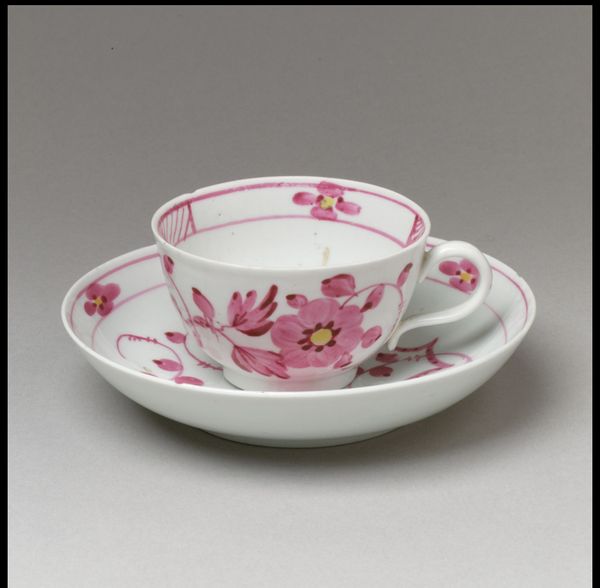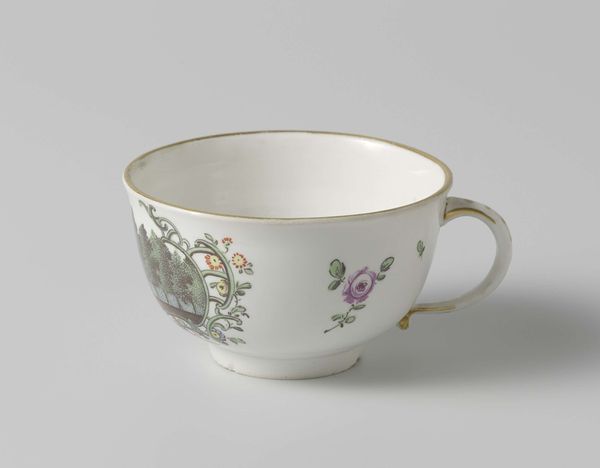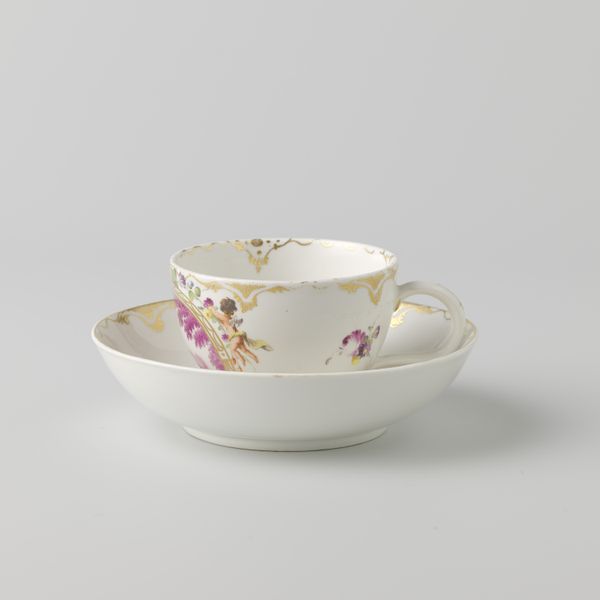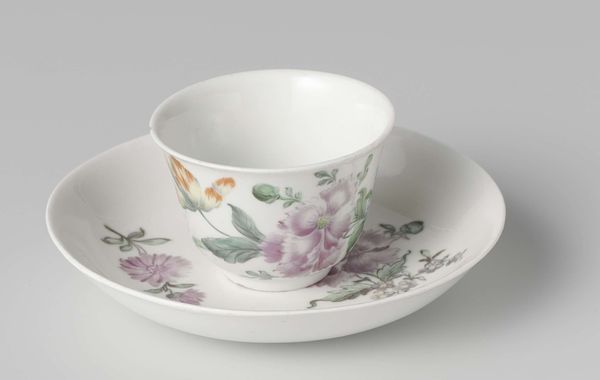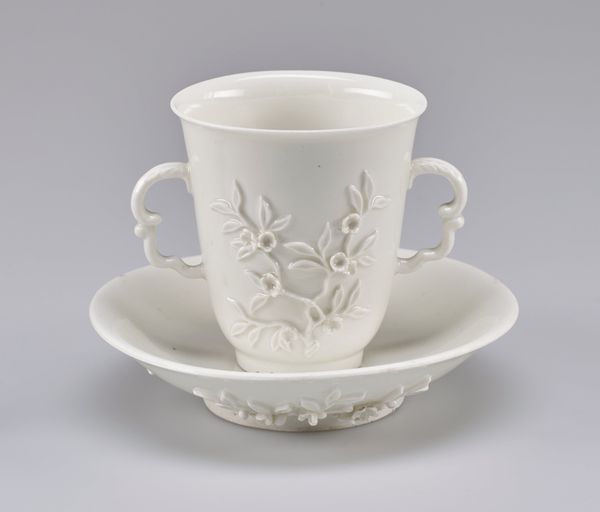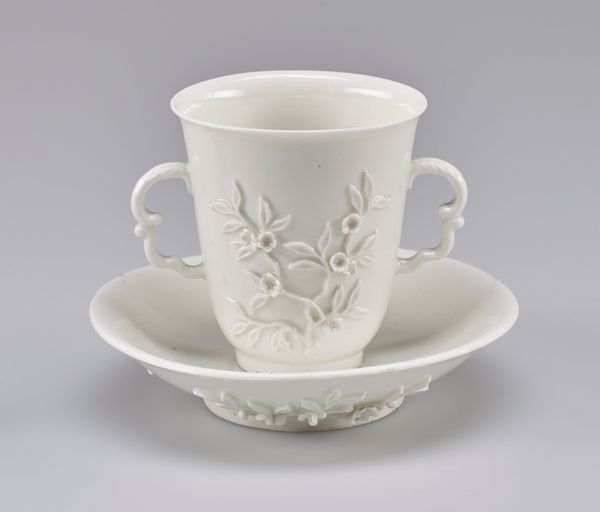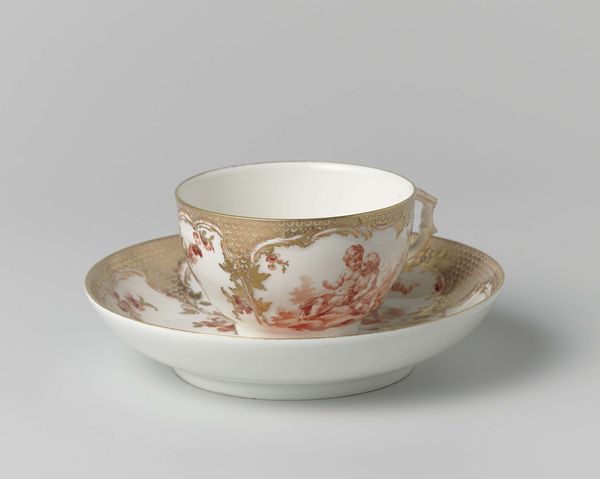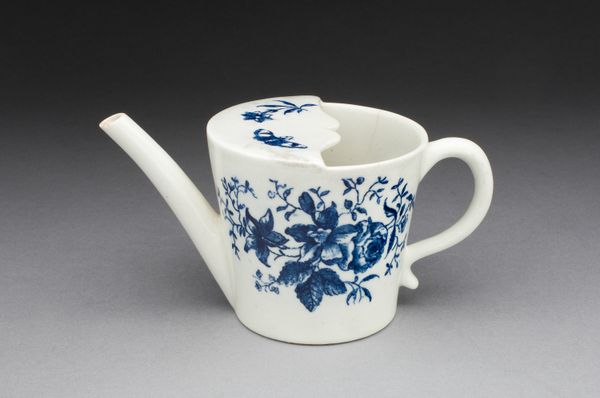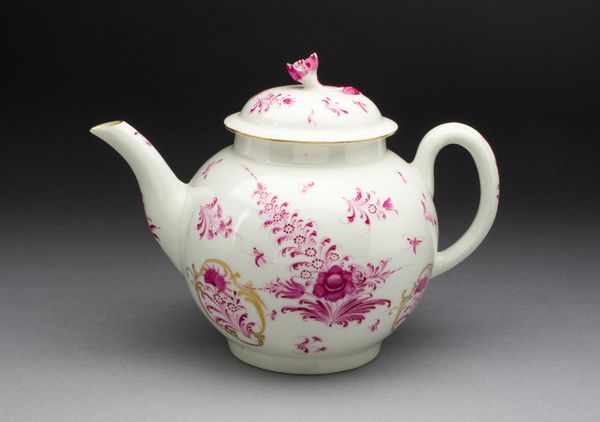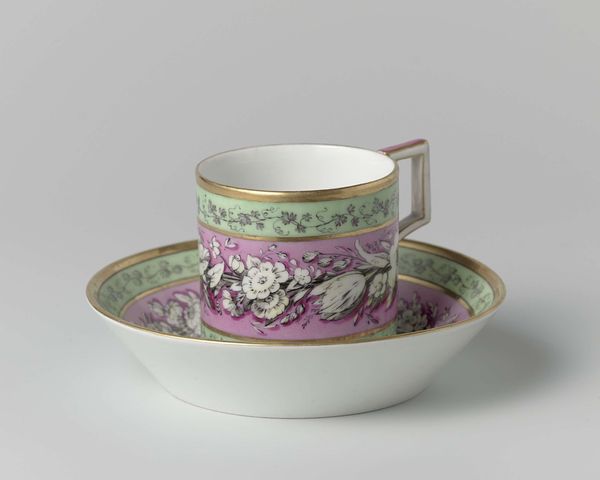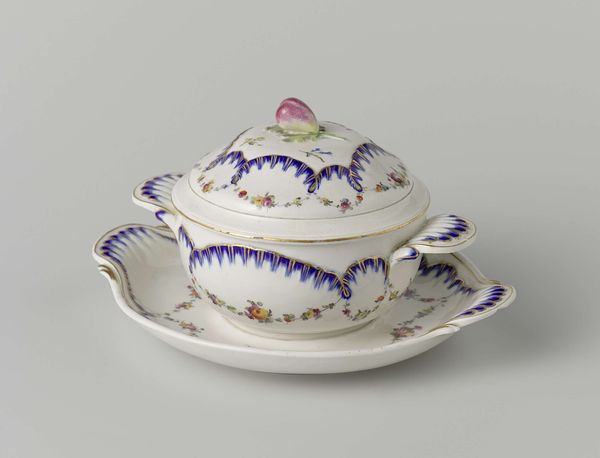
ceramic, porcelain, sculpture
#
ceramic
#
porcelain
#
sculpture
#
ceramic
#
decorative-art
Dimensions: Height (cup .169): 2 3/4 in. (7 cm); Diameter (saucer .170): 5 3/8 in. (13.7 cm)
Copyright: Public Domain
Curator: Looking at this delicate cup and saucer, my first impression is one of subdued elegance, a kind of whispered sophistication. Editor: Let's delve into the history surrounding it. What we're observing is a porcelain cup and saucer, believed to be crafted by the Rauenstein Porcelain Manufactory between 1775 and 1785. Curator: Those dates place it squarely within a period of enormous social and political upheaval. How would an object like this cup and saucer interact with those anxieties? What role might a finely wrought object such as this play for elites amidst profound class tension? Editor: On its surface, the floral imagery appears harmlessly decorative, but floral motifs had accumulated cultural significance through centuries of use in art and design. How might its owners in the late 18th century have experienced those meanings, particularly at a moment of growing tension? Curator: It is a moment when Europe is utterly entangled in the exploitation and extraction of far off colonies to acquire and reproduce these rare goods; do the painted flowers carry implications about social station, about cultivated taste, about trade and labor? Editor: This is why the recurring appearance of such design elements must be analyzed within its evolving historical and cultural context. In doing so, the images offer clues about not only aesthetic tastes, but also broader intellectual and philosophical concerns. Curator: Even now, its scale belies the intricate work of extraction, labor, and global supply chains required to bring this diminutive artwork into being. What hidden or obfuscated economies subtend this decorative art? Editor: This particular cup and saucer acts as an icon—an immediately graspable representation of larger networks, encoded with specific, resonant meaning. Reflecting on these things allows us to move past mere formal aesthetics and grapple with the complex world of symbolism. Curator: Indeed, considering porcelain through the lens of colonialism allows for critical readings of supposed progress. Even the intimate, everyday ritual of drinking from such a cup, is necessarily interwoven with these entangled narratives. Editor: Exactly. The images on the porcelain surface point to deeper cultural attitudes about beauty, nature, and power. And from there, it suggests larger patterns and trajectories. Curator: It is humbling to be reminded how material culture is itself constituted of these difficult, fraught, and persistent concerns. Editor: Yes, examining such a "simple" cup can truly revolutionize our view of history.
Comments
No comments
Be the first to comment and join the conversation on the ultimate creative platform.
